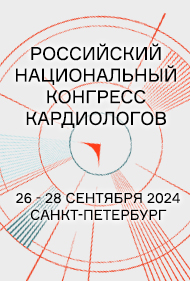Prehospital epinephrine associated with worse outcomes after cardiac arrest
In patients who achieved return of spontaneous circulation after cardiac arrest, prehospital use of epinephrine was associated with worse outcomes, according to new findings.
Myocardial Infarction Resource Center
Researchers analyzed the influence of epinephrine on recovery after cardiac arrest. International guidelines recommend administration of epinephrine every 3 to 5 minutes during cardiac arrest resuscitation, but “epinephrine may exert adverse effects during the post-resuscitation phase and contribute to myocardial dysfunction, increased oxygen requirements, and microcirculatory abnormalities,” according to the study background.
Florence Dumas, MD, PhD, and colleagues analyzed all patients with out-of-hospital cardiac arrest who achieved successful return of spontaneous circulation (n=1,556; mean age, 60 years; 71% men) who were admitted to a single cardiac arrest center from 2000 to August 2012.
Patients were stratified by epinephrine dose: none; 1 mg; 2 mg to 5 mg; >5 mg. The patients were determined to have a favorable outcome if they were discharged with Cerebral Performance Category Score of 1 or 2. Among all patients, 73% received some dose of epinephrine.
Seventeen percent of patients who received epinephrine were discharged with a favorable outcome compared with 60% of those who did not receive epinephrine (P<.001). The results were consistent regardless of length of resuscitation or in-hospital interventions performed.
The researchers determined that, compared with patients who did not receive epinephrine, the adjusted ORs of intact survival were 0.48 (95% CI, 0.27-0.84) for those who received 1 mg epinephrine, 0.3 (95% CI, 0.2-0.47) for 2 mg to 5 mg and 0.23 (95% CI, 0.14-0.37) for >5 mg.
Delay between cardiac arrest and first dose of epinephrine was linearly related to a bad outcome; patients who received epinephrine within 9 minutes of cardiac arrest (OR=0.54; 95% CI, 0.32-0.91) were more likely to have a good outcome than those who received it for 10 to 15 minutes (OR=0.33; 95% CI, 0.2-0.56), 16 to 22 minutes (OR=0.23; 95% CI, 0.12-0.43) or more than 22 minutes (OR=0.17; 95% CI, 0.09-0.34).
“The benefit of this drug when used during the resuscitation relies on the implied vasostress, which in turn may promote secondary detrimental effects during the post-cardiac arrest phase, combining myocardial dysfunction, ischemia-reperfusion, and post-anorexic injury,” Dumas, from INSERM U970, Parisian Cardiovascular Research Center, Paris Descartes University, Paris, and colleagues wrote. “Before incriminating the drug itself, our findings probably should provoke further discussion on the most appropriate scheme of treatment and its interaction regarding the resuscitation phases.”
Disclosure: The researchers report no relevant financial disclosures.
Source: www.healio.com






